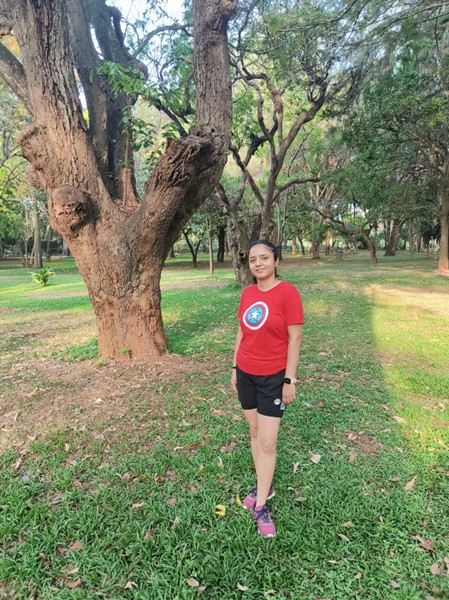“I’m convinced that about half of what separates successful entrepreneurs from non-successful ones is pure perseverance.”
If Steve Jobs thinks perseverance is the only key to success, I’m sure there has to be enough substance in this statement for you to trust the words of one of the best inventors that the world has witnessed.
How does perseverance come? From solving problems both tough and easy- it’s that simple. If you try to go back in the past and think about all the times you had to face a difficult situation — ultimately you would have ended up receiving tons of valuable lessons because of all the problem-solving you did to get out of that tough scenario.
I have a detailed 6-step framework where— my intention is to make problem-solving easier for you, let’s dive deep into how the framework unfolds and uncomplicates the problem-solving process for you-
Let’s assume a real-life scenario where one of your friends called Mark wants to lose weight. Being overweight is Mark’s problem, now let’s look at the top 6- step that Mark can follow to solve his problem. Before we get into the nitty-gritty, let me tell you one important tip-
Life is not fair and sometimes you might feel cornered by multiple problems related to different aspects of your life, but the best thing is to solve one issue at a time. That’s how you’ll be able to find a resolution. Now let’s dive into the framework-
1. Write the problem down clearly on a piece of paper- Mr. Charles Kettering who was the Head of Research at General Motors in the early twentieth century stated an extremely wise adage — “ A problem well stated is half solved.” So the very first part of your 6-step framework is going to be to understand your problem in-depth and write it down, this will give you clarity.
Mark should go like- “I want to lose 55 lbs to be fit.”
2. List the obstacles that are in the way of solving it- The second step is more like a follow-up step to understanding your problem in detail. Sit in a non-distractable space for 1–2 hrs and read the problem that you’ve stated. Sitting in solitude will force you to THINK, and thinking will give you a list of all the obstacles on the way.
Mark should go like- “I’m overweight because of — Unhealthy dietary habits, Stress Eating, No physical activity and so on”.
3. List the assets that are in favor of solving it- Once you’ve gained discrete clarity on the obstacles; do some more thinking on the immediate solutions that can fit into this. Also, be cognizant of all the assets you have to solve that particular problem.
Mark should go like- “I have a smartwatch to track my physical activity, an app like MyFitnessPal to keep a check on my vitals and calorie intake”.
4. List as many possible solutions as you can think of and take your time on them- You have a list of all the assets in your favor, now it’s time to spend some more time in solitude as you need to do some more thinking. How can you use these assets to gain maximum results? Think of all the possible solutions you have at hand to solve that particular problem.
Mark should go like- “I have to increase my physical movement — walk 15000 steps per day, do cardio or weight training or yoga at least 5 times a week. Track the daily calorie consumption using fitness apps and so on”.
5. Try to figure out the results of each solution- Once you have a list of solutions ready- you can go ahead and map the probable results across each set of solutions listed. This step is necessary to gauge the tangibility of the proposed solutions. Also, you’ll get a good direction in terms of tackling the problem.
Mark goes like- “Walking 15000 steps/ day- Improves my agility and burns approximately 400 calories, 1 hour of Cardio/ Weight Training/ Yoga- Burns about 200–600 calories per session. The fitness app lets me track the number of calories I can consume per day to shed the required amount”.
6. Choose the solution that seems best to you and put it into action- As an add-on step — do ample research on people who faced similar problems like yourself and figure out the solutions that helped them solve this. No problem is brand new; the total world population has crossed 8 Billion as of 2022 and if you still believe your problem is novel then that’s kind of naive. Multiple people would be undergoing the same situation as yourself- you can discover their approach to problem-solving through books and a basic internet search. After this step go with what your gut says is the right approach, followed by a BIG DISCLAIMER — Stay with a solution long enough ( minimum of 8–12 months) to check if it will work or not. Most of us quit way too early and that’s why we fail to make it to the resolution of difficult situations. Remember what Steve Jobs said — Pure perseverance is going to make you successful. If your chosen solution doesn’t work out try another possible solution as you have a list ready if you have followed this 6-step framework.
Mark goes like- “I walked 15000 steps and 1 hour of workout; daily for the last 12 months. Also, maintained clean eating habits and Viola- I’ve lost 50 lbs in 365 days as planned :D”
If Mark can get fitter so can you! No problem is big enough to break the human spirit, keep going there’s going to be light at the end of the tunnel.
Hi friend, if you enjoyed reading this blog do share it with your friends and family as they might benefit from this. 🙂 Also, let me know your thoughts in the comments section.
Follow the author on Medium for more interesting stuff like this.



